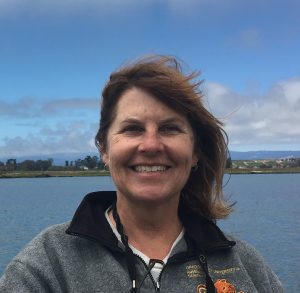This post is part of our blog series, Be Sea Otter Savvy, written by Gena Bentall, Director and Senior Scientist at Sea Otter Savvy. Posts in this series include tips on how to help sea otters thrive through ethical stewardship, as well as information about sea otters’ behavior, biology, and their role in the estuary and ocean ecosystems.
A New Perspective on Sea Otter Photography
You will soon be wondering what has directed my attention so intensively on photographers. In the past the field of wildlife photography was more of a specialist field—you had to have an expensive camera, lenses, and the ability to process and develop film. Today, DSLR cameras are becoming more affordable and easier to use, and every owner of a smartphone has a pocket-sized camera at their fingertips. Compounding the ubiquity of cameras, is the popularity of social media and the pursuit of the positive feedback an engaging image promises. In the course of our Sea Otter Savvy data collection sessions, it has now become rare to observe a disturbance to sea otters that does not involve photography of some kind, whether the tool is a long lens or a smart phone. The resulting images may, in an endless cycle, prompt others to approach and disturb sea otters in an attempt to replicate them.
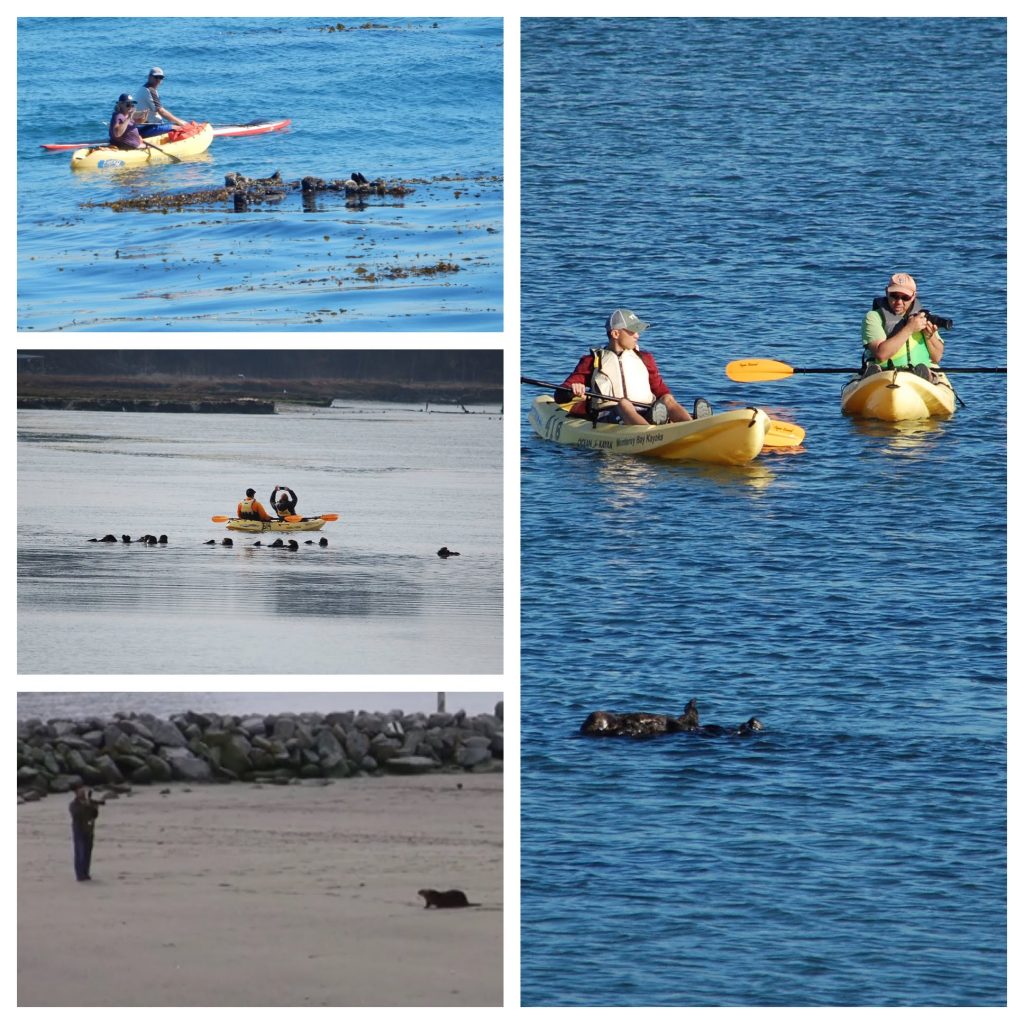
Capturing wild sea otters on film can be an essential tool for inspiring awareness and stewardship of this unique and charismatic marine mammal. Photographers may wield their art to teach others about behaviors, adaptations, and challenges that are unique to sea otters. I cannot imagine publishing a blog post on sea otters devoid of illustrative images, but every image you see on our website or social media is chosen with care. I remember a treasured book from my childhood—A Day in the Life of a Sea Otter—it was filled with black and white photos of sea otter faces, eyes bright and looking right at me. The cover of this book was torn and worn—a testament to my love for it. What has changed since that book was published in 1973?
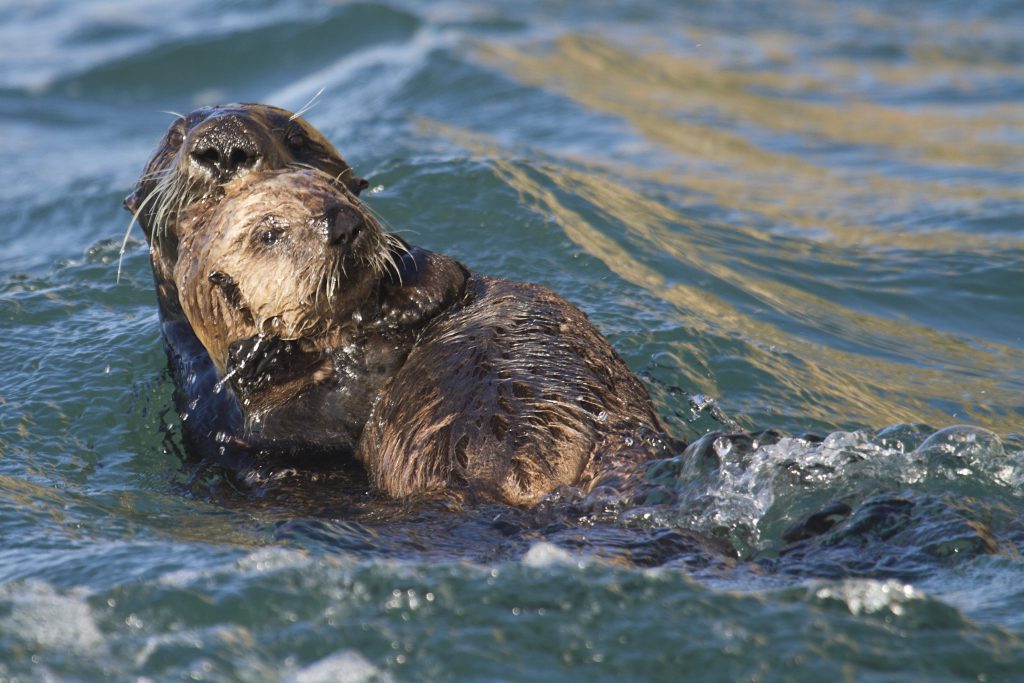
Times have changed, sea otter photography should, too
Sea otters have gained back some of what they lost of the California coast during the maritime fur trade that pushed them to the brink of extinction. Still vulnerable, they are nevertheless a survival story. As they have been recovering over the last half century, California has become the most populous state in the US, home to nearly 40 million people. Before the pandemic slowed things down, the current home range of the southern sea otter—Half Moon Bay to Santa Barbara—was a destination for national and international travelers. Even in the throes of COVID-19, the protected nearshore waters so vital to sea otters are inundated with recreationists. Many come seeking sea otters. All have cameras. Some are professional wildlife photographers, some are amateurs hoping to replicate their favorite sea otter image, some are pursuing the recognition the social media world showers on the perfect photo.
Important questions to ask about wildlife photography
Watching the tableau of the kayak and the camera play out again and again has taken some of the shine off of sea otter photographs for me. In response, I am setting out to change what we expect of wildlife photographs. Admire them, yes, but with a critical eye.
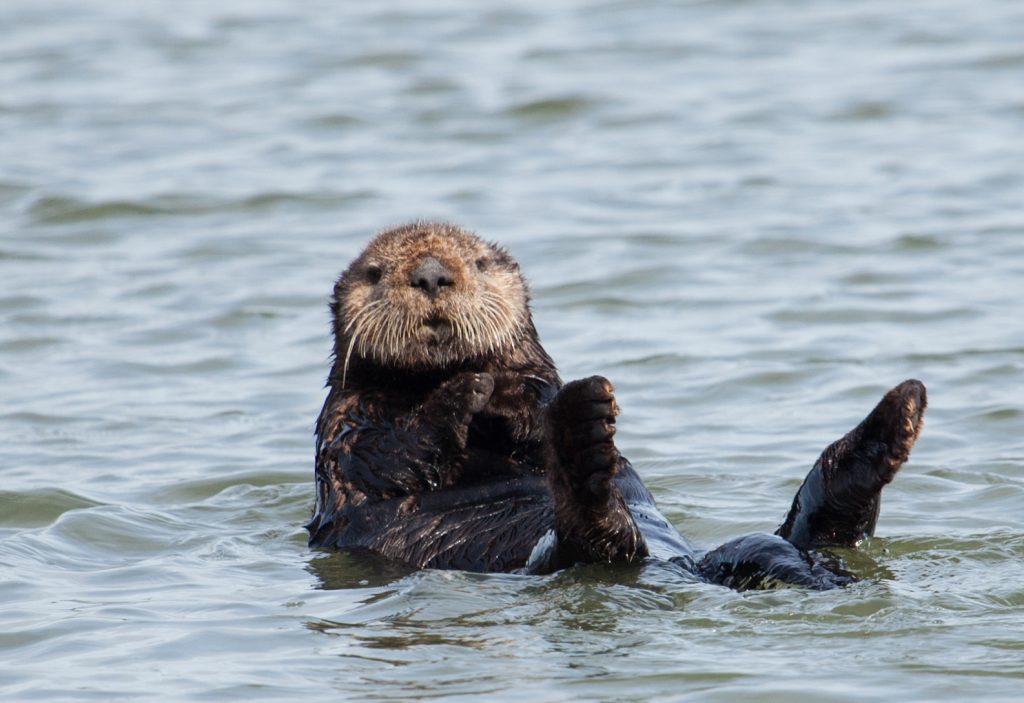
When you look at a wildlife photo, what do you see?
Where is the subject’s attention directed? Could the image be depicting a behavioral reaction to the photographer—for sea otters, head raised, alert gaze, actively swimming or diving away? While we often can’t be certain the photographer caused the disturbance, we can turn a discerning eye away from suspect images and demand those that celebrate sea otters absent the earmarks of disturbance.
How was the photo taken?
At Sea Otter Savvy, our favorite photographers complete the story by including information about their location relative to the otter (“I was on shore, 100 yards away”), the focal length of the lens used, whether the image as cropped, and confirmation that they did not disrupt the sea otters’ behavior in any way during their session. One of the most inspiring Instagram captions I’ve read was a mea culpa by a photographer who posted an image of a resting mother sea otter and her pup, acknowledging they had unknowingly disturbed otters while photographing them in the past. With courage and humility they shared, “I didn’t know, but now I do.” This an important message for other wildlife photographers. Social media is influencing behavior on a deep, often insidious level. Every photographer should consider that those viewing their images want to be like them. Their followers see them as a role model and aspire to populate their feed with photos like theirs.
What have you learned from the photo?
Read the caption. Look for the story: how does the image celebrate the natural history, behavior, ecology, or conservation of the subject? Does it foster awareness and stewardship?
Are the subject’s eyes riveted on the photographer?
This long-standing gold-standard for wildlife photography is my most formidable hurdle. I imagine the origins of the demand for eye-contact wildlife photos originates in our ache to feel a connection with wild things. As we look into the green eyes of the panther, we can imagine we are there. I argue that to favor such photos is an act of hubris. On a planet ever more dominated by people, the message of the eye-contact image is an anthropocentric one: we value the attention of the animal on us over preserving its natural state of being. The popularity of eye-contact photos is persistent with both photographers and viewers. I hope to see it diminish in coming years, replaced by images that remind us that animals do countless more interesting (and sustainable) things than noticing us.
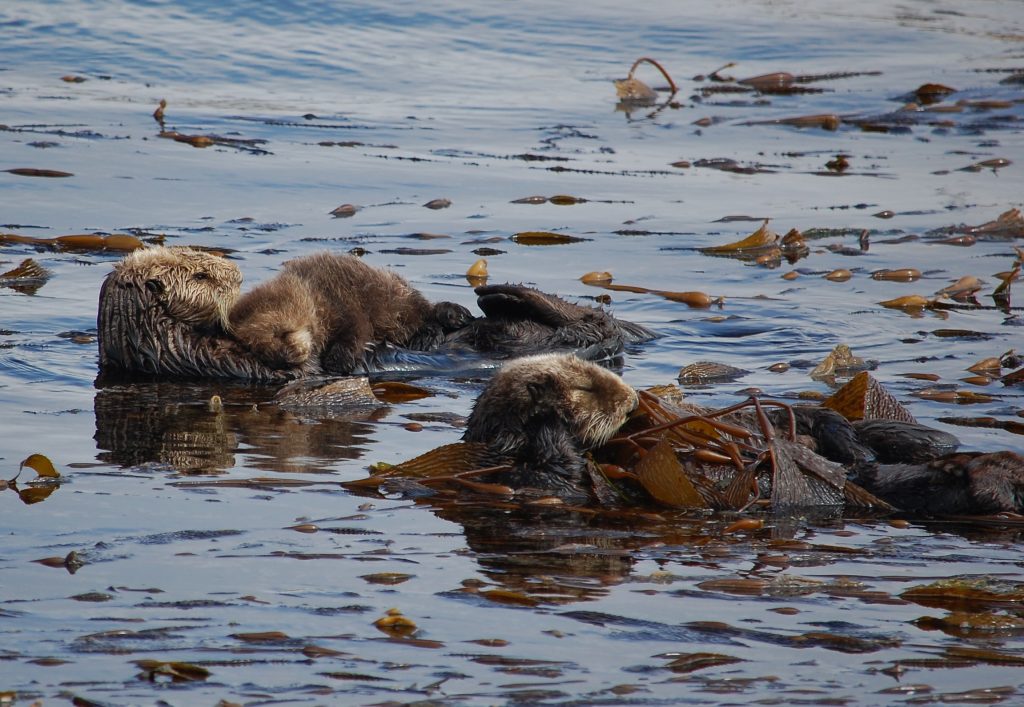
Encourage responsible wildlife photography
Sea otters will remain popular subjects for photography and video. In the age of the internet, images depicting sea otters in both wild and captive settings are easy to find, like, and share. Be impeccable with your choices to create and propagate them. Be generous with positive feedback when it’s warranted. We can no longer say that a message of conservation justifies the means and circumstances of acquiring the photo—images of sea otters are everywhere we look on the internet. What we are facing is not a shortage of sea otter imagery, but rather a dearth of behavioral and ecological context for those images.
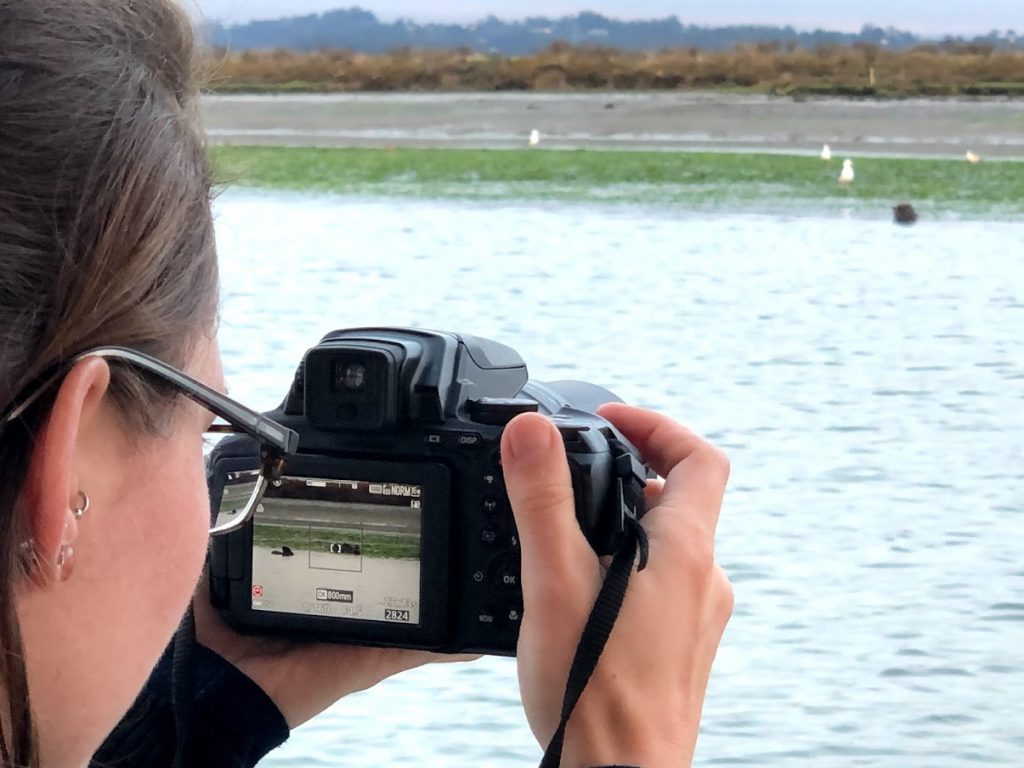
Take our wildlife photography quiz
How can you sharpen your critical eye for sea otter photographs? Read more and take our photo quiz: https://www.seaottersavvy.org/guidelines/photographers
Tell your own wildlife story in context
In celebration for all the unrecognized wildlife storytellers out there, Sea Otter Savvy is hosting a photography contest this summer. The mission of the Wildlife Storytellers Photo Contest is to promote photography as a medium for sharing stories about the deep relationships between organisms and the places they live. More than portraits of individual species, winning photos will tell a story about the relationship between a species within the context of the habitat it lives in, to inspire a deeper awareness and appreciation for the conservation of intact ecosystems and biodiversity. We aim to transform this aspiration for eye contact portraits to those that celebrate ecosystems and capture meaningful images that tell the stories of animal life in wild places.
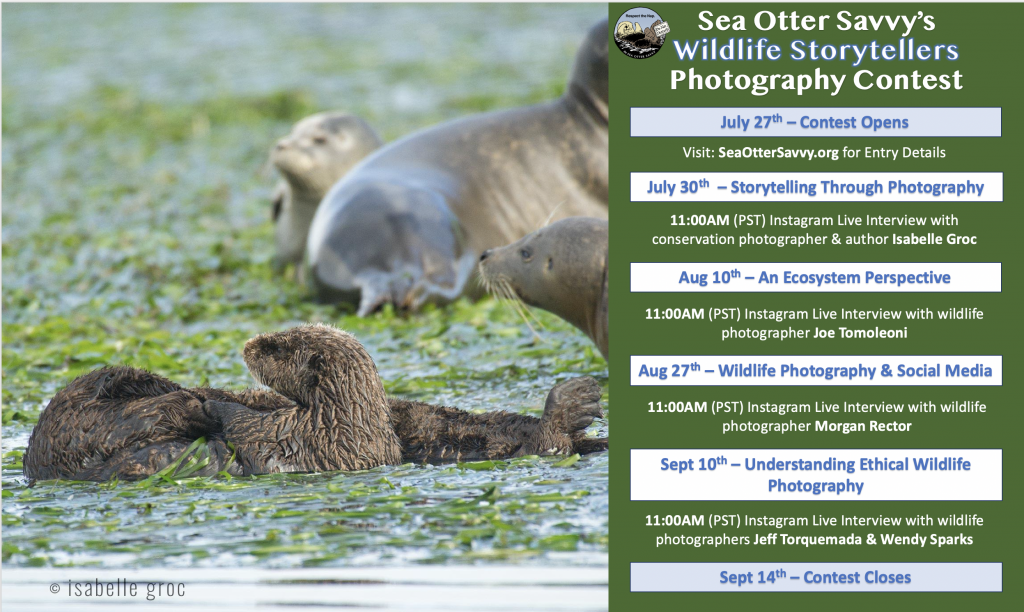
About Gena Bentall, Guest Author
Since 2001, Gena has worked as a sea otter biologist, studying sea otters in such wide ranging locations as the Aleutian Islands, Russia’s Commander Islands, San Nicolas Island off the coast of Southern California, and along the Central California coast. She studied zoology and marine biology at Oregon State University in Corvallis, and obtained her master’s degree in Ecology and Evolutionary Biology at the University of California Santa Cruz under Dr. James Estes. After years of studying sea otters in the wild, Gena has learned much about their unique biology and behavior, and witnessed first-hand the chronic nature of disturbance to sea otters by human recreation activities. Gena now directs the Sea Otter Savvy program and reaches out to the central coast communities of Monterey, San Luis Obispo, and Santa Cruz counties.
Subscribe to our weekly blog to have posts like this delivered to your inbox each week.
Help us protect and restore the Morro Bay estuary!
- Donate to the Estuary Program today and support our work in the field, the lab, and beyond.
The Estuary Program is a 501(c)3 nonprofit. We depend on funding from grants and generous donors to continue our work. - Support us by purchasing estuary-themed gear from ESTERO. This locally owned and operated company donates 20% of proceeds from its Estuary clothing line and 100% of Estuary decal proceeds to the Estuary Program. Thank you, ESTERO!
- Purchase items from the the Estuary Program’s store on Zazzle. Zazzle prints and ships your items, and the Estuary Program receives 10% of the proceeds. Choose from mugs, hats, t-shirts, and even fanny packs (they’re back!) with our fun Estuary Octopus design, our classic Estuary Program logo, or our Mutts for the Bay logo.
